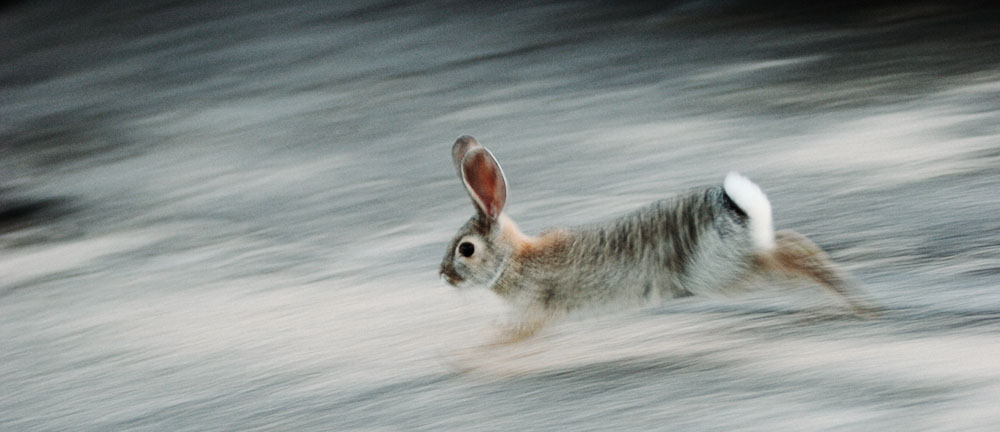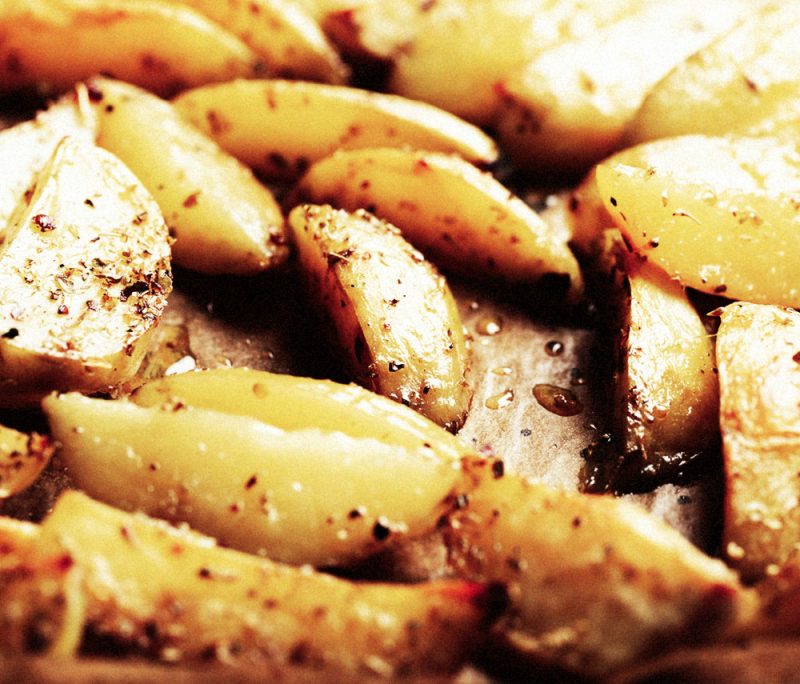
When the “First Fleet” of eleven ships sailed from England in 1787, bound for newly-discovered/acquired Australia, there were about 1,500 people on board. Men, women, children — and a couple of rabbits. Yep, rabbits! And I’m saying two, because with rabbits, as we all know, a male and female are all you need to get things going. And indeed they did.
Hang in, the food angle is coming.
Many of the men, and possibly women, were convicts. Prior to 1783, they would have ended up in North America. But after the American Revolutionary War ended that year, the newly formed United States said that no matter how small the crime — and some were ridiculously small — it no longer wanted Britain’s convicts. Ship them somewhere else, said the new, unencumbered US; we don’t want them.
While in many ways the Land Down Under was a challenging new destination for England’s convicts, the Great Brown Land was heaven on Earth for the propagating rabbits. And what started out as the introduction to Oz of an iconic pair of hoppers — memories from home for the Brits, and targets for their muskets on weekend hunts for some easy hippity-hopping protein — got completely out of hand. The First Fleet rabbits went forth and multiplied into plagues of great proportion.
I’ve never been a fan — actually I’m disgusted — of pictures of Great White Hunters who have felled giant “trophy” creatures in Africa or elsewhere, then stood, gun in hand, for a picture next to, or actually on their quarry, as in elephant. But disgusting as this may be, it seemed OK for me to be photographed with the 50 or so rabbits I felled one Saturday afternoon in my long-ago teens. But understand, these grey thumpers were not trophies of some ridiculous sport, and nor was I some kind of Australian super sniper. Nope, these rabbits were food for our family. And for this entrepreneurial youth to gut, skin and sell to his appreciative neighbours.
All of that is a long way of getting into the fact that the protein we all need and enjoy eating doesn’t necessarily have to be the production-costly likes of beef, pork or lamb. There is other food out there. If there’s a rabbit plague, catch it, and eat it. As I did with my .22. When I took up the call to help control the plague, these were not cute Disney thumpers that show up annually for 15 minutes of Easter fame. They were and continue to be simply grey European rabbits that can be barbecued, roasted, deep fried, fricasseed, casseroled or whatever into delicious meals. My mother, bless her, invariably chose to roast, and roast, and roast our lapin quarry. I never had the courage to suggest that there were other ways to do them, or that medium rare might be an alternative to extremely well done.
While rabbit may not become our everyday fare, it could well become part of a whole range of foods that will end up in our kitchens, simply because all kinds of world change might one day force us to eat differently. Droughts, floods, disasters, supply and demand, global warming, economics in general will mean that not just rabbits, but many other kinds of what we now think of as unusual fare of the fields, forests and streams will become centre-on-the-plate protein. Unusual today, but sustaining us tomorrow.
It will be a tough call to wean ourselves from the tastes, succulence, and potential kitchen triumphs of the red-meat family. And sure, we eat seafood and poultry, but somehow it doesn’t have the same zing for a Big Deal meal.
I have never tried possum, armadillo, or Australia’s wichetty grubs. But I’ve had fish and chips of shark, and shamefully soup of their fins. The list goes on. I have some whitetail deer meat in the freezer, and easy access to kangaroo meat, which my cousin says is really good if you do it the right way. It’s not on my food bucket list. But rabbit? I’m thinking about it once again as I remember our afternoon hunt, and how we singlehandedly attempted to wipe out a plague.
Not bunnies, but rabbits. Find yourself a quality butcher, and hop into something nutritionally different.
slow roasted rabbit
Serves 4 to 6
I wish my mom could have had access to this recipe from allrecipes.com. The way she did it was to roast the rabbit whole, sometimes with vegetables. And she left it in the oven forever. This recipe is well rated, and your butcher will have provided the rabbit in pieces. Roasted in a spicy onion gravy, it’s “great for dinner, served with rice and homemade bread.”
1 3 lb rabbit, cut into pieces
1 3/4 tsp salt
1 tbsp ground back pepper
1/4 cup vegetable oil
4 tsp white sugar
1 onion, chopped
3/4 cup ketchup
1 clove garlic, chopped
1 tbsp paprika
1 1/2 tbsp Worcestershire sauce
1 cup water
Preheat oven to 350˚F.
Season the rabbit pieces with salt and pepper. Heat the vegetable oil in a large skillet over medium high heat. Add the rabbit pieces and brown on all sides.
Place in a 9×13 inch baking dish. In a medium bowl, combine the sugar, onion, ketchup, garlic, paprika, Worcestershire sauce and water; pour over rabbit pieces.
Bake uncovered for 90 minutes in the preheated oven, basting frequently. Meat should be tender when done.
Match: I’d recommend a dry Australian white but nothing oaky.
pot-roasted rabbit with rosemary, thyme, sage and lemon
Serves 4
This recipe is from Jamie Oliver’s first book, The Naked Chef. Jamie — who is everywhere, doing everything — says normally the rabbit is braised but in this recipe, it is pot-roasted quickly. Love his herb selection. And lemon is always right.
1 rabbit, cut into 8 pieces
1 lemon
Salt and coarsely ground black pepper
1 heaping tbsp chopped rosemary
1 heaping tbsp chopped thyme (or a generous tsp of dry thyme)
Olive oil
3 tbsp butter
8 sage leaves
1 clove of garlic, thinly sliced
1 large glass of white wine
Peel the lemon, roughly chop the peel and set aside. Squeeze the lemon and drizzle the juice over the rabbit pieces. Season the pieces generously with salt and pepper. Sprinkle the rosemary and thyme over the rabbit.
Preheat your oven to 400˚F.
Heat some olive oil in a baking dish, add the rabbit pieces and any loose rosemary and thyme and fry them over a high heat for about 5 minutes or until the rabbit is golden brown.
About halfway through, add the lemon zest, a tablespoon of butter and the sage leaves. Add the garlic and fry for another minute to soften but not colour.
Add the white wine — let it sizzle for a minute or so. Put the dish in the preheated oven for about 10 minutes or until cooked to your liking.
Remove pan from the oven. Add 2 tbsp of butter and stir it through the juices. Served with baked vegetables. Drizzle the juices over the rabbit.
Match: Don’t always head for the whites. You might want to try a light red, like Gamay.

roast vegetables
It’s harvest time. Of potatoes, parsnips, rutabaga, and perhaps other vegetables to accompany your rabbit. Mint has the freshest flavour and it works well with all of your roast veggies. If you have a garden you will already have discovered that mint grows like a weed.
5 lb potatoes
8 cloves garlic, finely minced
1 1/2 cups quality olive oil
1 large or 2 small bunches fresh mint, stems removed, leaves finely chopped
1 tbsp coarse salt
Freshly ground black pepper, to taste
Preheat oven to 350˚F.
Wash, and if necessary peel the potatoes, cut into large pieces. Steam for ten minutes.
Oil and roast in shallow pan for an hour or so.
Toss with the garlic, oil, mint, salt and pepper in a large bowl. Let stand for 30 minutes before serving.
lapin a la cocotte
Serves 4 to 6
Unless you toss bits on the barbie, rabbit often ends up a roast or some kind of delicious, melt-in-your-mouth stew. The kind you often make with beef, pork or chicken. Again I trekked ’round the web and found this French beauty on food.com, and I thank EdsGirlAngie who is credited as the creator.
1 rabbit, quartered
(about 2 1/2 lb)
3
slices bacon, cut in thirds
1 1/2
cups onions, sliced
2
garlic cloves, minced
3
tbsp flour
1
cup beef broth
1⁄4
cup red wine
1
tsp dried thyme
2
tsp dried parsley
2
bay leaves
Salt and pepper
In a large skillet or medium-sized Dutch oven, cook bacon until done; remove bacon with a slotted spoon and reserve for another use (for a salad, etc).
In the bacon drippings, cook the onion and garlic until transparent. Add the rabbit pieces and sauté over medium heat until rabbit is golden.
Sprinkle on the flour and continue to brown rabbit for another 5 minutes or so, then add the beef broth, red wine, thyme, parsley and bay leaves.
Cover and simmer over low heat for about an hour, adding more broth if necessary. Salt and pepper to taste (with the bacon drippings, not much salt is needed).
Serve with mashed potatoes or buttered egg noodles.
